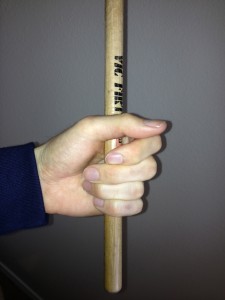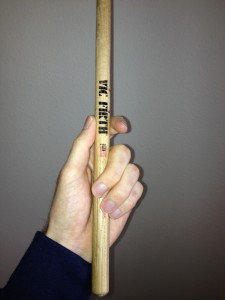Download Moeller Traditional Exercise 2 PDF
I’m exaggerating the upstrokes using a forearm rotation and then stoping at the top (so the stick tip faces up.) I’m exaggerating the movements to make it easy to see the forearm rotation.
I’ve noticed that if you utilize forearm rotation on the upstroke it makes it natural to unwind the forearm rotation to produce the downstroke.
I originally learned Moeller playing matched grip and without forearm rotation. After playing professionally for a few years I developed tendonitis in my right shoulder due to overusing muscles in arms and shoulders while playing at high volumes.
I revisited my technique and developed the Moeller with forearm rotation as well as focusing on just the wrists and forearms to create the whip. My wrists and forearms got stronger and I was able to produce the same high volume sounds without the stress in my shoulder joints. This helped alleviate my discomfort.
I now play the Moeller with and without forearm rotation. I like to utilize forearm rotation to produce loud volume snare and tom hits. However, when I’m playing at lower volumes I just use mainly the wrists and fingers without the forearm rotation.
If your experiencing any overuse issues it might be useful to develop your Moeller with forearm rotation. However, more importantly is to play relaxed without holding any tension in your neck and shoulders.


